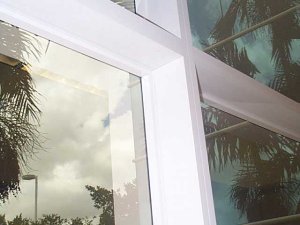window storm panels

A storm panel added to a single-pane window can reduce winter heat loss by as much as 50%. They are also less expensive than double-glazed windows. You can add them to the exterior or interior side of windows.
Exterior panels
There are two types of exterior storm window panels: single and combination. Single storm panels are made of glass, rigid plastic, or plastic sheeting. You typically put them up in the fall and take them down in the spring. A combination panel consists of two window panes and a permanent screen over the window. In the summer, you can slide one of the panes up and the screen down for ventilation.
Exterior storm window panels need to be custom-made.
Interior panels
Interior storm window panels consist of flexible (like polyethylene) or rigid plastic. Rigid plastic panels are typically mounted using Velcro, magnetic, or snap-in seals. You can easily install the flexible type in window frames using snap-in retainer seals or double-faced tape. Despite their ease of installation, interior panels are usually not as clear as their rigid counterparts. Flexible panels may also wrinkle or sag after installation.
Heat-shrink film, however, doesn't wrinkle. This type of flexible film adheres tightly against the seal as it's heated using a hair dryer.
Interior storm window panels should go up before the heating season and come down before the cooling season. They are more useful for windows with awnings or for those that crank-out, where it's difficult to use an exterior storm window panel.
Unlike exterior storm window panels, interior panels don't have to be custom-made to fit windows, though custom-made ones are available from some window suppliers. Therefore, interior panels usually cost less. You can purchase interior panel kits from building suppliers or hardware stores.
See all window coverings and treatments.
